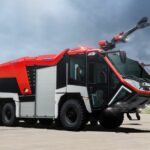What is an ARFF Truck? Understanding Aircraft Rescue and Firefighting Vehicles
When it comes to airport safety, few vehicles play a more crucial role than the ARFF truck, an acronym for Aircraft Rescue and Firefighting truck. These specialized vehicles are designed specifically for airport firefighting and emergency response, built to handle unique challenges posed by aircraft accidents or fires. ARFF trucks are the unsung heroes of aviation safety, combining power, speed, and specialized equipment to protect passengers, crew, and airport infrastructure. In this article, we will explore what an ARFF truck is, its key features, and functions, and how it differs from standard fire trucks.
The Purpose of ARFF Trucks
An ARFF truck’s primary purpose is to respond quickly to aircraft incidents, especially during takeoffs, landings, or emergencies on the runway. Aircraft incidents can involve large fuel loads, rapidly spreading fires, or challenging access to the aircraft due to the size and height of modern airliners. This makes ARFF trucks essential tools for any airport, from small regional airstrips to major international hubs. They are designed to meet stringent standards set by organizations such as the Federal Aviation Administration (FAA) in the U.S. and the International Civil Aviation Organization (ICAO), ensuring they can handle the wide variety of emergencies encountered in aviation.
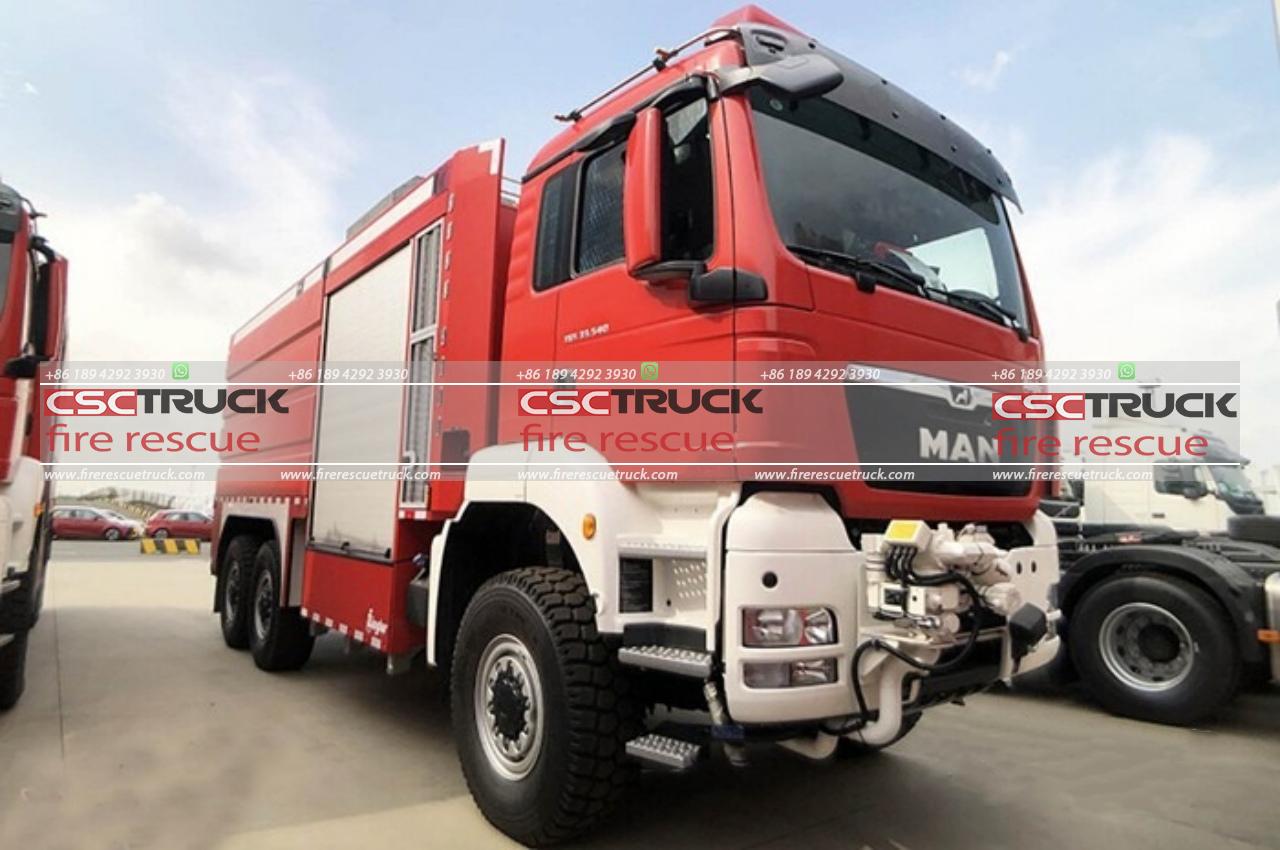
Key Features of ARFF Trucks
The design and functionality of ARFF trucks are tailored to meet the specific needs of aircraft rescue and firefighting operations. Below are some of the key features that make these vehicles uniquely suited for their role.
1. High-Speed Performance
One of the most critical factors in aircraft firefighting is response time. ARFF trucks are built for speed, with some models capable of reaching speeds of up to 80 mph (130 km/h). This speed is crucial for reaching an aircraft quickly, minimizing the time before fire suppression or rescue operations can begin. The high-speed capability also allows ARFF trucks to navigate large airports with extensive runways and taxiways swiftly.
2. Advanced Fire Suppression Systems
ARFF trucks are equipped with a variety of fire suppression systems, each designed to handle the unique nature of aircraft fires, which often involve highly flammable aviation fuel (Jet-A). The most common extinguishing agents used include:
– Water: Although effective in cooling and controlling fires, water alone is often insufficient for aviation fuel fires.
– Foam (AFFF): Aqueous Film-Forming Foam is the primary extinguishing agent used by ARFF trucks. It creates a blanket over the fuel, smothering the fire and preventing re-ignition.
– Dry Chemical Agents: Potassium-based dry chemicals are used for rapid fire knockdown and control of fuel-based fires.
– Halotron or Carbon Dioxide (CO2): These are used in specific scenarios, such as electrical fires or fires involving sensitive equipment.
Many ARFF trucks come with roof-mounted turrets capable of projecting foam or other agents over long distances, allowing the crew to stay at a safe distance while still effectively fighting the fire.
3. Large Water and Foam Capacity
ARFF trucks are equipped with large tanks to carry water, foam, and other fire-suppressing agents. Tanks can hold anywhere from 1,500 to over 4,000 gallons (5,700 to 15,000 liters) of water, with foam concentrate capacities to match. These large reserves ensure that ARFF trucks can fight fires for extended periods without needing to return for a refill, which is vital during high-stakes firefighting operations where every second counts.
4. Four-wheel drive and All-Terrain Capability
Airport runways, taxiways, and surrounding areas are not always paved or clear of obstacles, especially in off-road areas near the airport perimeter. ARFF trucks are typically built with four-wheel drive and rugged tires, giving them the ability to traverse uneven or unpaved surfaces. This feature ensures that the truck can reach any part of the airport quickly, regardless of the terrain or weather conditions.
5. Powerful Engines
Given their size and the need for speed, ARFF trucks are powered by large, high-output engines. These engines not only propel the vehicle but also power the onboard firefighting systems, such as pumps and turrets. Diesel engines are the most common, often turbocharged for additional performance, and capable of delivering several hundred horsepower.
6. Cab and Crew Protection
ARFF trucks are equipped with specialized cabs designed to protect the crew from heat, smoke, and other hazards. The cab is typically equipped with climate control systems, air filtration, and reinforced windows. Some models even feature thermal imaging cameras and other advanced technologies to help firefighters locate heat sources or survivors in low-visibility conditions.
7. Rescue and Evacuation Tools
In addition to firefighting equipment, ARFF trucks often carry tools for rescue and evacuation, such as hydraulic cutters, spreaders (often referred to as “Jaws of Life“), and ladders. These tools enable the crew to access the aircraft, cut through fuselage sections, and assist in the evacuation of passengers and crew members.
How ARFF Trucks Differ from Municipal Fire Trucks
While ARFF trucks and municipal fire trucks both perform firefighting and rescue functions, there are significant differences between the 2. Municipal fire trucks are designed for urban or suburban environments, focusing on structural fires, vehicle accidents, and other incidents that occur on streets and highways. In contrast, ARFF trucks are specifically engineered for airport environments and the unique hazards that come with aircraft incidents.
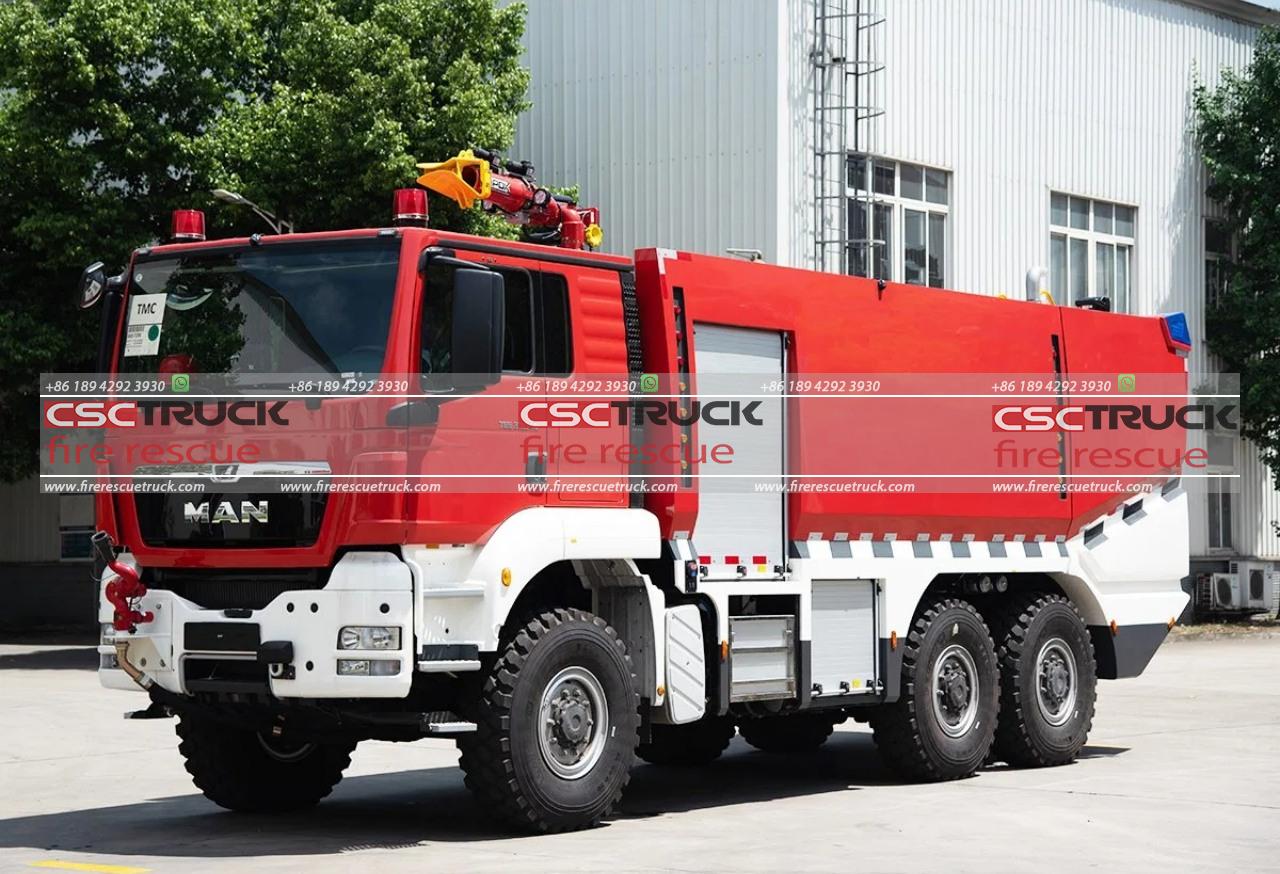
Size and Weight
ARFF trucks are generally larger and heavier than standard municipal fire trucks. Their robust construction and larger tanks for firefighting agents contribute to their increased size. While a typical municipal fire truck might weigh between 30,000 and 60,000 pounds, ARFF trucks can weigh upwards of 80,000 pounds when fully loaded.
Firefighting Agents
While municipal trucks often rely on water and some foam systems for extinguishing fires, ARFF trucks are equipped with multiple types of extinguishing agents, including specialized foams for handling fuel fires. This versatility is necessary due to the large quantities of aviation fuel involved in aircraft fires, which require more than just water to suppress effectively.
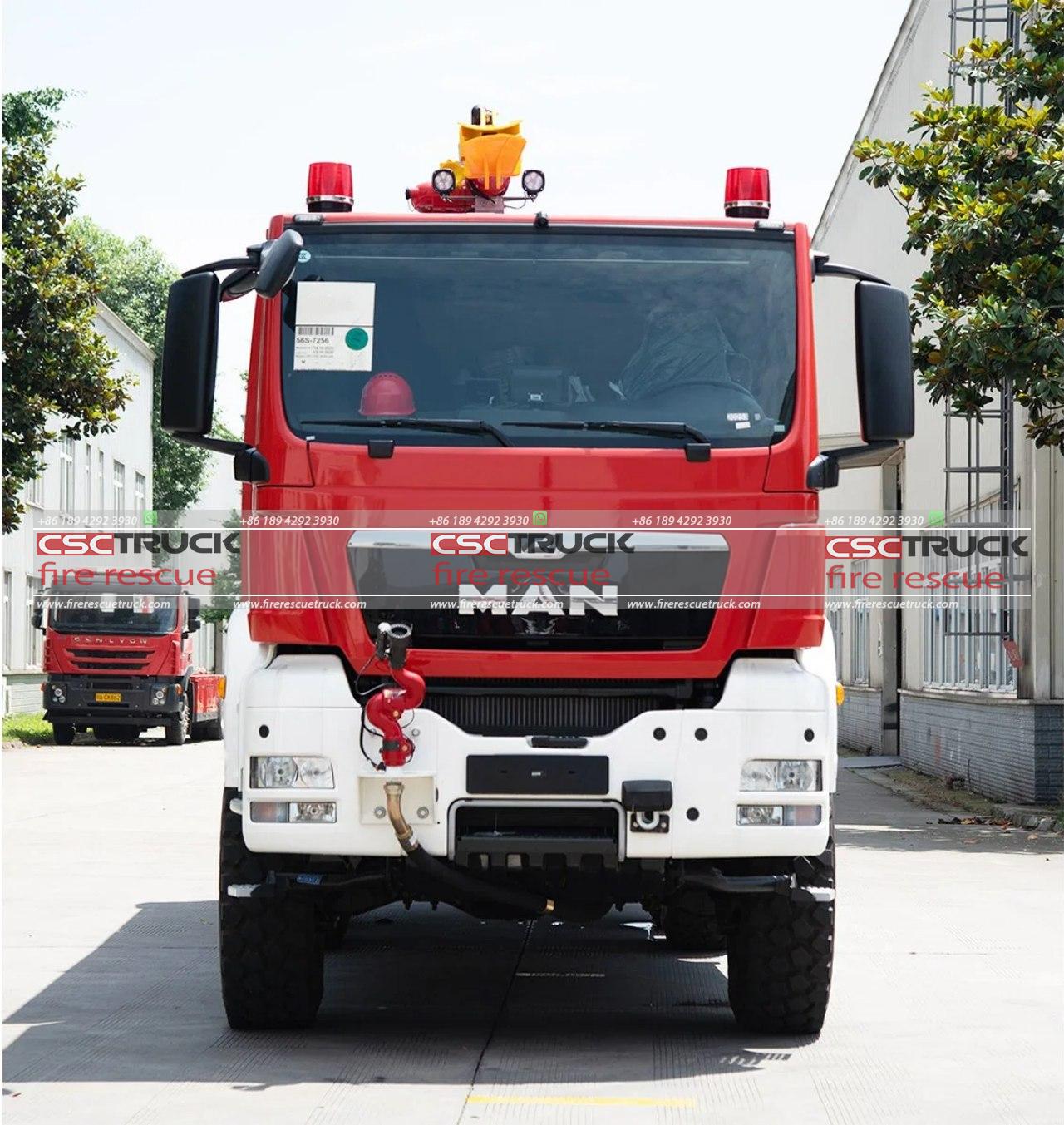
Off-Road Capability
Most municipal fire trucks are designed for paved roads, while ARFF trucks are built to handle a variety of terrains. The off-road capability of ARFF trucks allows them to traverse grass, dirt, gravel, or other unpaved surfaces that might be found near runways or in the airport’s surrounding areas.
Speed and Mobility
Although some municipal fire trucks are designed to move quickly, ARFF trucks are built to reach much higher speeds due to the critical need for rapid response during aircraft emergencies. The mobility and speed of ARFF trucks are key factors that differentiate them from other fire apparatus.
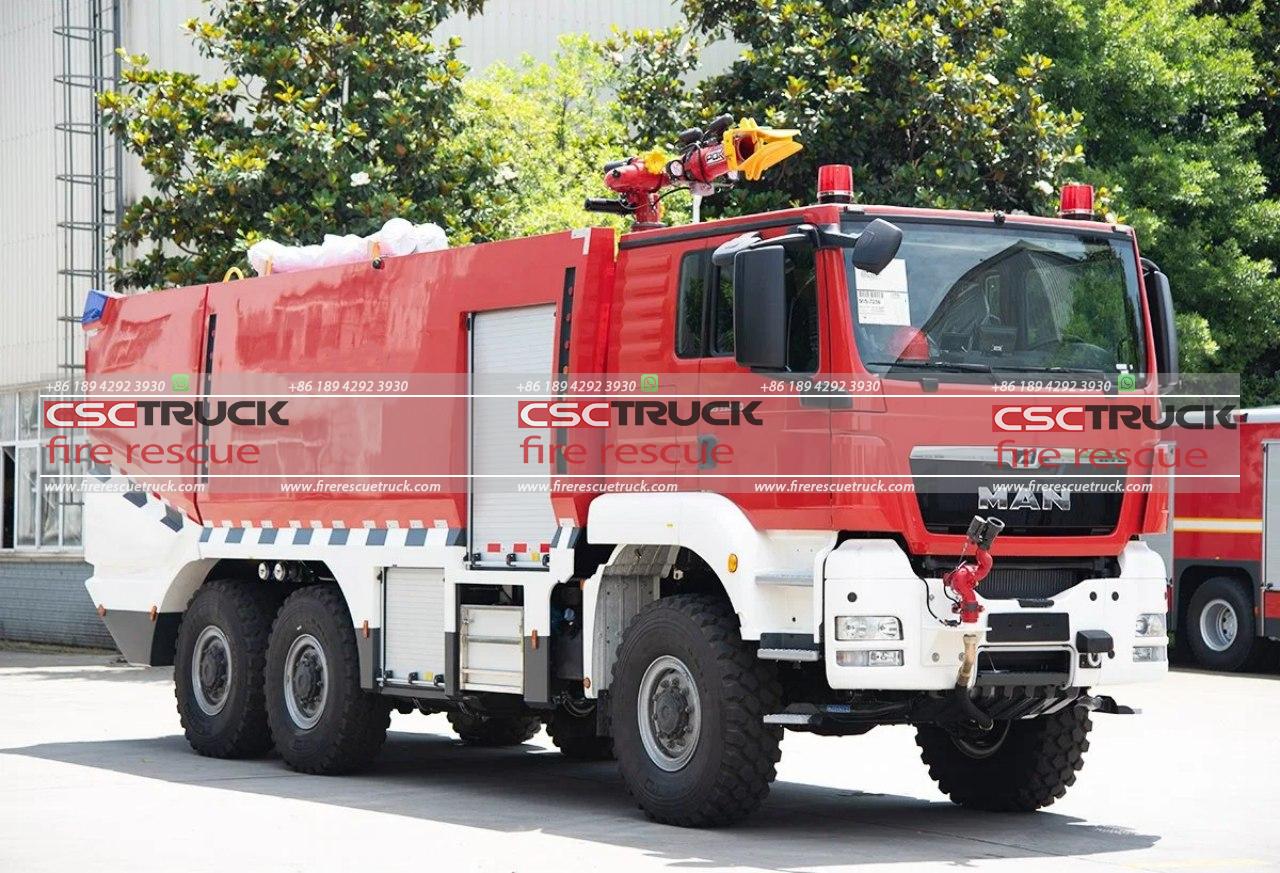
Different Categories of ARFF Trucks
Depending on the size of the airport and the type of aircraft serviced, ARFF trucks come in various categories, typically classified by the FAA and ICAO based on their capabilities.
1. Rapid Intervention Vehicles (RIV)
These are smaller, faster vehicles designed for the initial response to aircraft incidents. They are often equipped with quick-reaction firefighting systems and rescue tools.
2. Major Foam Vehicles
These are larger trucks equipped with extensive foam tanks, water reservoirs, and high-capacity pumps. They are the main firefighting units at airports and are designed to tackle large-scale aircraft fires.
3. Combined Agent Vehicles
These trucks carry a mixture of firefighting agents, including foam, dry chemicals, and gases like Halotron, to handle a variety of fire types. Combined agent vehicles are highly versatile and capable of dealing with complex fire scenarios involving both fuel and electrical fires.
Conclusion
ARFF trucks are critical components of airport safety, equipped with the tools, speed, and power necessary to handle the unique challenges of aircraft rescue and firefighting. From their rapid response capabilities to their specialized fire suppression systems, ARFF trucks are purpose-built to ensure that airports are prepared for the worst-case scenarios. Without these advanced vehicles, the risks associated with aircraft accidents would be significantly higher. As air travel continues to grow, the importance of ARFF trucks in maintaining safety cannot be overstated.





